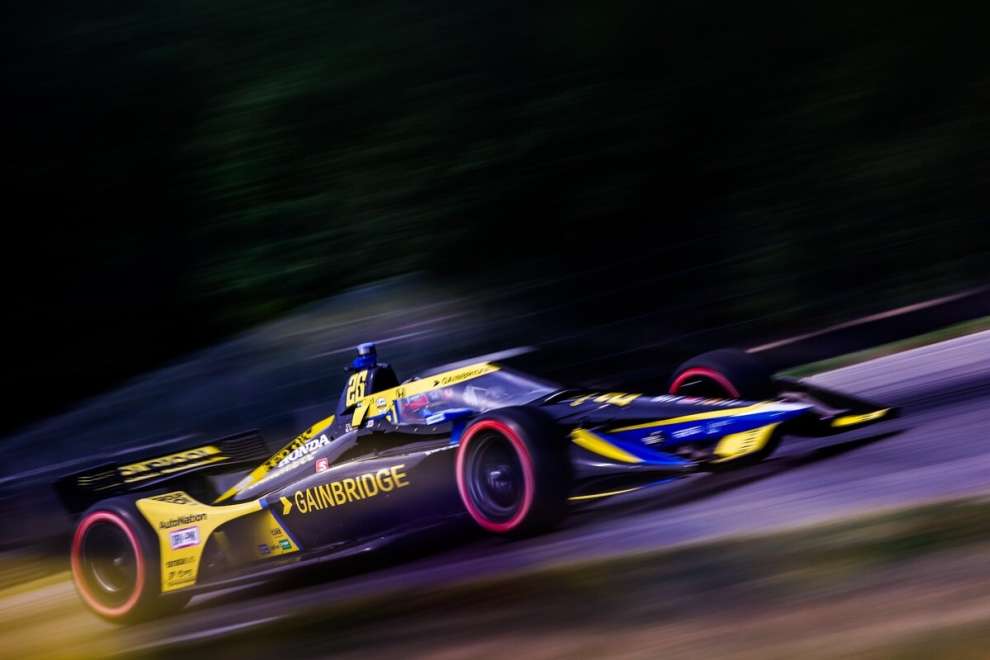By Carlo Platella
Encouraging updates are arriving on the state of work in the development of the hybrid system desired by IndyCar, whose debut is expected after the next Indianapolis 500. After the not exactly promising results at the end of 2023, the latest tests show a greater system maturity developed in cooperation between Honda, Chevrolet and Ilmor. The first numbers on the increase in power guaranteed by the electric motor are also starting to circulate, but the methods of exploitation of which still remain uncertain.
Development
More details on the electrification of IndyCar emerge from the pages of Racecar Engineering, which report the interview conducted by Andrew Cotton with Darren Sansum, head of the engines of the North American series. The development of the system was taken over by the current engine engineers involved in IndyCar. In detail, Honda took care of the cooling system, the DC-DC converter and the accumulator. As for the latter, it's about a supercapacitor battery, preferred to lithium ion cells for the best power-to-weight ratio, at the price of lower energy storage capacity. For this reason, the system will only be usable for a few seconds before running out of charge and needing to be recharged at the next braking action.
Honda has also continued writing the hybrid management software, to be loaded onto the standard McLaren Technologies control units. Illmor, on the other hand, took care of housing the entire system, including the battery, inside the transmission casing, aiming to contain its overall dimensions on single-seaters whose chassis will remain identical. With regard to the electric motor finally, it is a unit developed by Emple System.
As already happens in other electrified disciplines, such as Formula 1 and endurance, the motor generator will be exploitable as a starter motor. The hope of the organizers is that this will help restart the combustion engine if a car stops on the track, thus limiting interruptions due to the Safety Cars. However, the issue regarding the methods of exploitation during the march remains to be resolved. The organizers will limit the rechargeable energy for each lap depending on the tracks, while it is not yet clear how much the supply and recharging of electric power will be automated and how much will be delegated to the pilot.
Power: 800 horsepower smashed
Another report written by Marshall Pruett and published on Racer.com updates on the outcome of the latest track tests, the most recent of which was held at Homestead with ten cars involved. The feedback is highly positive, with only one technical failure reported and almost 1500 laps accumulated in total. The focus slowly begins to shift to performance. The 50 horsepower of the push-to-pass system will continue to be added to the 750 horsepower of the combustion engine, guaranteed under high turbo boost, contrary to the initial hypothesis of its removal. The hybrid, however, will guarantee an extra power of around 60 horsepower for a few moments, therefore less than the 100-150 horsepower initially feared. Nonetheless, the synergy between push-to-pass and electric motor will allow the power units to go up to peaks of 850 horsepower.
The impression, however, is that drivers will not use the hybrid so much on the straights, but when accelerating out of slower corners, leveraging the immediate availability of electric torque already at low revs. “It is an excellent supplement to the formula of current engines, which are small displacement and low torque”the words of Will Power reported by Racer.com. “Even just using the electric motor, it's really useful and gives you lots of torque at low revs, when you really want some to get away from a curve. Just 60 more horsepower is a lot of power at those low rpms, because it's instant. If you look at when the normal power and torque curves begin, you can see how the hybrid already changes them positively.”

Similar times
The increase in power will guarantee a greater reactivity when exiting corners, generally improving performance in the draw. These are contrasted with a slight deterioration in cornering, due to the increase in weight linked to the hybrid system, which some sources quantify at 27 kg while others report being over 40 kg. However, this will be partly compensated by the lightening work carried out on the aeroscreen, transmission and gearbox casing. Overall, it is estimated that lap times will not be far from those of recent seasons, an aspect however strictly connected to the type of individual tracks.
#IndyCar #hybrid #challenge #growing #power #reliability
